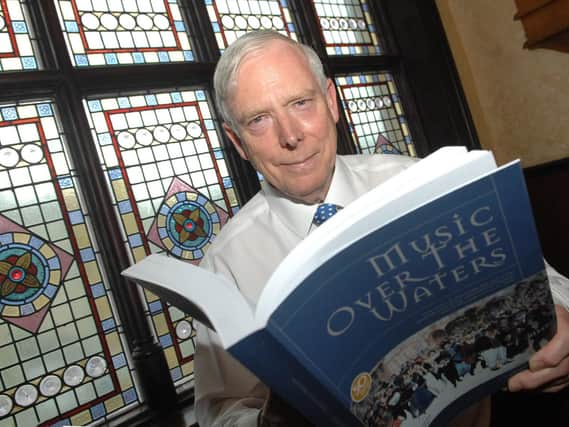WW1: Harrogate's war years explained by Malcolm Neesam


One man knows the answer more than anyone - the town's leading historian Malcolm Neesam.Harrogate may have been hundreds of miles from the front line during the First World War but in many ways it gave just as much and suffered as terrible a price as anywhere else on these islands.
In total, Harrogate’s war dead from 1914-18 numbered nearly 900, a loss felt keenly not only by immediate relatives and loved ones but by the wider town.
Advertisement
Hide AdAdvertisement
Hide AdFigures show the number of Harrogate soldiers killed rose as the end of the war neared, the worst spell being 1917 and 1918.With Harrogate’s total population standing at approximately 20,000 at the time, the 879 names still visible on Harrogate’s war memorial in the town centre amounted to 4.4%.Put simply, nearly one in every 23 of Harrogate’s then citizens lost their life in the First World War.
As a new book called Wells and Swells – the golden age of Harrogate Spa, 1842-1923 by leading Harrogate historian Malcolm Neesam reveals, the tone of the town changed overnight after the declaration of war on Tuesday, August 4, 1914.
An epic book including substantial new information on Harrogate during the First World War, the popular historian shows it wasn’t only a case of young men signing up for the Harrogate Pals regiment or The Harrogate Territorials, known as ‘the Terriers’, preparing to head for the fields of Belgium and France.
The town also found itself a major centre for treating wounded soldiers.
Advertisement
Hide AdAdvertisement
Hide AdFor half a century or more, Harrogate had been a magnet for visitors from home and abroad.Drawn by its spa reputation, many of them were from the British aristocracy and European royalty.
Which is how Her Imperial Highness the Grand Duchess George of Russia came to take personal charge of Tewit Well Nursing Home, which was one of main hospitals established in Harrogate to tend to wounded soldiers arriving by rail.
Harrogate also welcomed a tide of refugees from beleagured Belgium with great generosity during the war.‘Foreign nationals’ on the wrong side of the conflict, however, were forced to hand themselves over to the authorities, including one group of Germans who were a highly popular musical band.
Parts of life on the Home Front in Harrogate carried on as usual. There was no actual food rationing until the final year of the conflict and there were still regular musical concerts at the Royal Hall, or the Kursaal, as it was then called. The electrication of new parts of town also carried on at some pace.
Advertisement
Hide AdAdvertisement
Hide AdAs war raged during those terrible years of conflict from 1914 to 1918, the staff of the Harrogate Herald - the main newspaper in town then, carried on reporting.Asides from from the loss of men and women on the battle fields, war time privation really began to cut deep into local civilian life in 1917.Paper shortages meant that the Harrogate Herald had to be reduced in size.
But nothing could stop the newspaper’s owner W.H. Breare addressing newspaper letters each week called ‘Dear Chaps’ to every Harrogate soldier and sailor on active service.Part of the reason we know all this is because of this newspaper’s own archives, which have been utilised by leading Harrogate historian Malcolm Neesam in his forthcoming new book, Wells and Swells – the golden age of Harrogate Spa, 1842-1923.
Major new store to open in Harrogate...